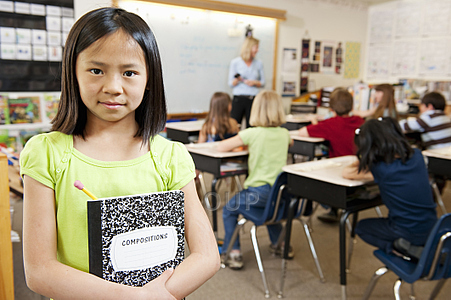 Kate Read, co-author of the new Kindergarten series, Show and Tell, offers some practical tips for making the most of your mixed-ability Kindergarten classroom.
Kate Read, co-author of the new Kindergarten series, Show and Tell, offers some practical tips for making the most of your mixed-ability Kindergarten classroom.
Kindergarten classrooms can be busy and confusing places at the best of times, but when you (like most of us) have to cope with a wide range of abilities, it throws an extra challenge into the mix. We love the fact that each child is an individual, with his or her own quirky little personalities, but it sure makes teaching effectively a challenge! Don’t despair! Here are a few simple steps to unmix you!
1. Be prepared
As with so many things in life, the secret is in the preparation. Think about what you want to achieve and what it is reasonable to achieve on both a class and individual level. Set a range of achievable goals: begin from the same starting point then vary the level of difficulty. Remember that mixed abilities do range upwards – you want to keep the most able children challenged and interested too.
When creating or adapting activities, chose ones which can be approached in a number of ways, especially in regards to oral or written abilities. Think of ways to exploit a variety of skill sets. For example, if you were going to introduce a new song, you might look at doing the following with it:
- acting out the words with no production, but focusing on creating interesting movements to illustrate understanding
- a singing/production element
- a drawing element
- a simple reading/writing element (e.g. a gap fill or a create a new verse) for those most able to cope with written text.
Make sure that your instructions are very clear, structured and achievable when you present the tasks. Be very clear about what you hope they will achieve by the end of the class or activity – include the range of outcomes in this. When you give instructions, demonstrate the whole process from beginning to end.
Also, don’t underestimate the value of review. Creative reviews give the lower-ability children a chance to take stock and gain confidence while providing a springboard for other children to attempt higher-level activities.
2. Use the children’s strengths
It’s very important for each child to know that he or she is a valued member of your classroom community. Each contribution is important. For example, someone with good motor skills but poor linguistic skills could make a different but equally important contribution to a project or activity and you need to make this clear. Most tasks will be enhanced by mixing abilities within a group and encouraging peer co-operation. Many children enjoy taking the teacher role and this can be usefully exploited!
Using the children’s different strengths also benefits their social development. Be sensitive to how far you can push the children, but at the same time do mix things up by changing groups, dynamics and procedures when you think they can handle this.
Teaching a mixed–ability class is a great opportunity to
- develop cooperative learning and peer teaching
- appeal to different strengths and learning styles
- support the less able and challenge the more able
- train children to work both independently and in groups.
3. Be flexible
As you will know, teaching mixed abilities draws on all your multi-tasking skills – but it is worth it when it works well. At times there might be a bit more confusion than with a single approach, but keep calm, aware, and in control, and you will often hear that sweet hum of concentrated activity. Just in case things don’t go perfectly to plan, try to keep a good ‘Plan B’ activity in the sidelines, even if it is just a quick break in the form of an action song or a chant before settling them back into the task. If you see their interest flagging, don’t be afraid to change your approach.
4. Appreciate the achievements of all learners
All children need praise, particularly when navigating the unknown waters of a new language. Find things to praise in all the children’s efforts. If you can’t find something, then deliberately help them do something that is praiseworthy. Remember to think of the individual’s learning path and compare what they’ve done to their own past achievements as opposed to the achievements of others. Demonstrate and reward success – post their efforts on the wall, or in folders, and hand out congratulations stickers, etc. In a very simple way, go back to the objectives you discussed at the beginning of the class. Show the children how they achieved them and how well they did.
Challenge question for fast finishers: how many times did I manage to insert ‘mix’ into this blog?
Would you like more practical tips on working with mixed-ability classes and developing 21st Century skills in your Kindergarten children? Visit our site on Teaching 21st Century skills with confidence for free video tips, activity ideas and teaching tools.


It´s really interesting for me to receive this information. It¨s great.